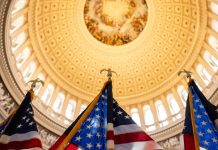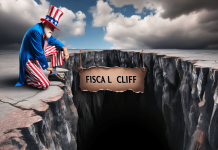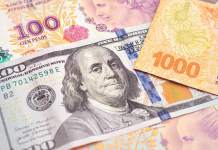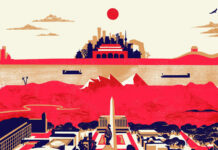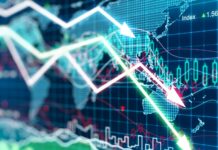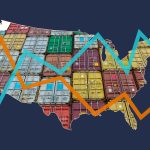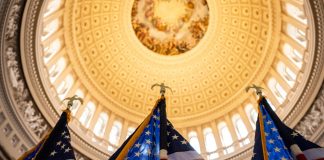In this fast-changing world several trends have emerged as long-term realities. A handy acronym might be: ICAG, standing for inflation, commodities, and gold. Multiple recent events have brought these trends to the fore.
Starting at home there was the bankruptcy of Silicon Valley Bank and a couple of others as well as a number of close calls. As the Fed in an effort to tamp down inflation began raising interest rates at an historically rapid pace, the yield curve became deeply inverted, with short-term rates much higher than long-term rates. This has squeezed banks, forcing them to pay depositors more in interest than the banks can earn from their long-term bonds.
Silicon Valley Bank was initially presented as a one-off, with its vulnerability stemming from uniquely poor and risky investment decisions (too many low-yielding government bonds as a risible example) and its dependence on one industry and on large depositors. Large depositors withdraw their money first and ask questions later. In the blink of an eye, Silicon Valley Bank became the second-largest U.S. bank ever to be forced to close its doors. Two smaller banks failed as well.
As a result, many analysts initially said this is not 2008 again. And they are right – it is probably worse. The biggest bank ever to fail in the U.S. was Washington Mutual, which became a symbol of the 2008 economic crash. WaMu, however, was a tale of fraud: its implosion didn’t come about because of interest rate conditions the Fed itself had created.
Back then, the Fed was able to respond by opting for ultra-loose monetary conditions – near-zero short-term rates and quantitative easing. These created the conditions for a recovery in both the economy and the markets. Today, however, that kind of monetary policy would severely aggravate inflation, though it still might be necessary to avoid a devastating economic collapse.
The Fed’s monetary policies in the aftermath of the 2008-09 period enabled the economic and market recovery to persist for more than a decade. The downside was that most of the enormous amounts of money the Fed created found their way into financial markets rather than into the real economy. This showered riches on Americans with the money to invest, who could participate in the market’s gains. But the great majority of Americans, who lacked the means to participate in the financial markets, were left out. Inequalities in the U.S., which already had been rising for decades, ratcheted further up.
This vastly wider divide between the very rich and everyone else is one reason that the Silicon Valley Bank failure isn’t a matter of one bank that made some bad decisions. The widening inequalities mean that U.S. banks in general depend heavily on large depositors, making them vulnerable to the actions of a relatively small handful of players. Here are some telling statistics. Around 70% of the country’s wealth is in the hands of 10% of the population, while only about 3% of wealth is in the bottom 50%. When it comes to savings and bank deposits, the numbers are even more skewed. About 40% of savings come from the top 1%. The top 10% account for nearly all the rest. One implication is that only a small percentage of the population accounts for the great bulk of large bank deposits. This fact is one of the least appreciated risks spawned by the outsized concentration of money in the hands of the very few.
It has put the Fed in an excruciating bind: continue to try to fight inflation – which has been rising again – and risk bringing on economic catastrophe or accept high and rising inflation as the price of averting such economic Armageddon. Given this choice, it should seem obvious that inflation is the lesser evil. We think the Fed will be forced to come to that conclusion as well.
For a while the situation was eased thanks to the enormous amounts of money the government was handing out to counter the effects of the pandemic. That caused savings in the U.S. to jump from $1.2 trillion in 2019 to $2.9 trillion in 2020, as larger numbers of lower-income Americans were able to open bank accounts. But lately personal savings have recently fallen below pre-pandemic levels. While wages have been rising, inflation has been rising faster, making it harder to save – not to mention that all the credit card debt-consumers have accumulated is being charged at 20% interest rates. These trends, which work against a broad base of Americans being able to save, may start to affect even Americans in the lower part of the top decile. The bottom line is that banks will find themselves ever more dependent on the very rich, who, as noted, are quick to react to any perceived sign of trouble.
I said above that most of the money the Fed created post-2008 found its way into the financial markets rather than the real economy. There was a notable exception, however: fracking, which banks enthusiastically funded. The problem is that fracking, while it has produced a lot of oil, hasn’t left us in a stronger position when it comes to having more control over our economic fate. It was a missed opportunity, one of many in the natural resource and technology sector, critical sectors that have played second fiddle to get-rich- quick schemes, including the stock market itself, dreamt up and fostered by our financial/information colossus, whose greatest skill is using its enormous client base for its own needs – i.e., money – rather than for the mutual benefit of service provider and client.
But fracking, because of its scale and importance, stands out. Though frackers lost money from the get-go, the enterprise still would have been worth it if we had saved a big chunk of the oil produced, either aboveground or even better, adopting a long-term focus and producing less in the near term and keeping more in the ground for longer-term needs. Saving oil either above or below ground would have entailed higher oil prices, painful over the shorter term, but producing a wonderful long-term blessing. Today we could be sitting on a rainy-day reserve of 2 billion barrels, maybe more. But we’re not. We still get a lot of oil from unconventional drilling, but not nearly enough to exert control over oil prices. And strikingly, over the past two years we have used up about half of the rainy-day oil reserves we had spent about 40 years accumulating. Our present-day lack of control over oil prices, by itself, translates into an inflationary future. The recent decision by OPEC+ to cut oil production is another economic slap in our face.
A hogtied Fed that bungled macroeconomic policy. What else could be wrong? A lot. The Ukraine war has brought China and Russia even closer together. This coupling of the greatest manufacturing base the world has ever seen with the world’s greatest endowment of natural resources arguably creates the most formidable partnership the world has ever seen.
This towering twosome is well on its way to uniting the world in an effort to address worldwide problems. Both Russia and China are founding members of the Shanghai Cooperation Organization (SCO) and BRICS. SCO’s mission is to bring together countries, mostly developing Eurasian ones, with the shared goal of generating economic growth and security. The most important requirement is the willingness to cooperate with other members regardless of differences in religion, forms of government, or other factors. Jeffersonian democracy, killed off about half a century ago in the U.S., could see a renaissance writ very large in the SCO and BRICS.
BRICS, a sister organization to the SCO, is an acronym for the four original members, Brazil, Russia, India, China, and the first new member, South Africa. BRICS has been given the job of developing a reserve currency that will compete with the dollar. That will be preceded by many intermediate steps, including increasing the amount of international trade that is non-dollar-based. The war in Ukraine has given this goal an enormous impetus. The ultimate aim will be a basket of currencies linked together via blockchain and – super important – backed by gold. That should not be a surprise to Eric’s readers as I have been talking about this new reserve currency for about a decade. My 2020 book: The Rise of China and The New Age of Gold, is so far surprisingly close on the details of the new currency. A bow would be undeserved as full credit goes to a white paper penned by the head of China’s central reserve bank, the PBOC, in 2009.
Let’s divide the world into two parts. The first is the OECD countries (minus Mexico and Turkey), which we’ll label as “rich.” The second we’ll call the “less rich”; it includes China, Russia, other developing countries, and any country that does not want to be under the aegis of the U.S.
According to data from the World Bank, the less-rich countries have 7 billion people vs. 1.1 billion in the rich countries. GDP as measured by purchasing power parity (as opposed to dollars) is $58.6 trillion for the rich vs. $83.2 trillion for the less rich. On a per-capita basis this works out to roughly $53,000 vs. $11,900.
One other important statistic is resource production potential. The World Bank has a statistic called resource rents, which is measured by the contribution of a country’s resources to its GDP. The higher the number, the more resources the country has for future development. The current ratio between rich and less rich is about 2.85:1, which suggests the less-rich part of the world controls about 74% of resource reserves. (That this ratio is less than the ratio of per-capita income between rich and less rich makes clear profound resource shortages relative to achieving middle-income status for the world as a whole.) These numbers show that the less rich are the world’s economic driver, a major reason the queue for SCO and BRICS membership is galloping ahead.
As I have argued from the beginning of the war, Ukraine will likely prove a major inflection point, our last effort to stay on top by engaging in conflict. From the start it was clear the war was not going our way. The collapse of the ruble was followed by a quick recovery. Despite a nearly 20% U.S. poverty rate, we kept pumping in billions to Ukraine. Whatever they wanted they got until our inventories became depleted. Russia, on the other hand, has a seemingly endless supply of weapons. What’s more these weapons have destroyed Ukrainian defenses such as anti-aircraft systems, which make way for ultra-sophisticated guided bombs.
While Russia is fighting and winning, which will add to its historic horde of natural resources, China has been on a peace campaign, one turbo-charged by our hapless and boomeranging sanctions. Highlighted by the China-brokered rapprochement between more than decade-long bitter enemies Saudi Arabia and Iran, results have topped expectations. Countries from Mexico, Argentina, and other Latin American countries have joined OPEC countries in applying for membership in the SCO and BRICS. And don’t kid yourself, major European countries are not all as stupid as they seem. Blowing up an 11-billion-dollar piece of infrastructure that was the heart and soul of German manufacturing – a source of cheap energy that gave it an advantage over competitors – is not exactly the action of an ally. The smart money is betting that the EU sides with the SE, not the NW.
When you combine all these shifts and trends – a Fed helpless to fight inflation, the rising importance and clout of the less-rich part of the world, and a dollar that dies a little more every day – one clear message is that commodities, while remaining volatile, will be uptrend. That emphatically includes gold, which will get a special boost as BRICS proceeds with developing a new reserve currency, backed by the only resource whose value comes from transcendent characteristics rather than industrial uses. Gold, the only resource capable of instilling monetary discipline, will see its price multiply manyfold.
It’s striking that during the past very volatile 18 months, commodities as measured by two broad indices outperformed stocks. You’d see similar results if you looked at almost any other reasonable time period since the market bottom in March 2020. This stands on its head what you’d find between the century’s start and the pandemic bottom. During those years, it was stocks that consistently outperformed.
This about-face is confirmatory evidence that profound changes are afoot. Real assets and companies dealing in real assets are the new outperformers as the less-rich part of the world becomes the driver of global economic growth. The momentum in SCO and BRICS makes it ever more likely that growth will no longer be dominated by what the West needs or wants. Most of the world needs natural resources, which means that until/unless we find a way to alleviate resource shortages, it will be real things – with gold leading the way – that will be the market leaders, extreme volatility notwithstanding.
This is not to say that the world doesn’t need America. It does need America, just not today’s America. The America that reached its zenith in the generation-plus that followed WWII was the greatest economy the world has ever known. That America was a model of Jeffersonian democracy, a model of shared prosperity – a prosperity that was built on unmatched inventiveness. Much of that inventiveness remains foundational even a half century after we began our descent. As I have argued persistently, even the greatest need some form of discipline to thrive or even survive. We lost that discipline when we left gold.
Now we have a second chance. If we choose cooperation and accept the monetary discipline of a worldwide gold standard, I have no doubt we will again lead the world to a united prosperity. Let’s hope the coming tumult serves as a critical wake-up call from which the whole world will benefit.
In this fast-changing world several trends have emerged as long-term realities. A handy acronym might be: ICAG, standing for inflation, commodities, and gold. Multiple recent events have brought these trends to the fore.
Starting at home there was the bankruptcy of Silicon Valley Bank and a couple of others as well as a number of close calls. As the Fed in an effort to tamp down inflation began raising interest rates at an historically rapid pace, the yield curve became deeply inverted, with short-term rates much higher than long-term rates. This has squeezed banks, forcing them to pay depositors more in interest than the banks can earn from their long-term bonds.
Silicon Valley Bank was initially presented as a one-off, with its vulnerability stemming from uniquely poor and risky investment decisions (too many low-yielding government bonds as a risible example) and its dependence on one industry and on large depositors. Large depositors withdraw their money first and ask questions later. In the blink of an eye, Silicon Valley Bank became the second-largest U.S. bank ever to be forced to close its doors. Two smaller banks failed as well.
As a result, many analysts initially said this is not 2008 again. And they are right – it is probably worse. The biggest bank ever to fail in the U.S. was Washington Mutual, which became a symbol of the 2008 economic crash. WaMu, however, was a tale of fraud: its implosion didn’t come about because of interest rate conditions the Fed itself had created.
Back then, the Fed was able to respond by opting for ultra-loose monetary conditions – near-zero short-term rates and quantitative easing. These created the conditions for a recovery in both the economy and the markets. Today, however, that kind of monetary policy would severely aggravate inflation, though it still might be necessary to avoid a devastating economic collapse.
The Fed’s monetary policies in the aftermath of the 2008-09 period enabled the economic and market recovery to persist for more than a decade. The downside was that most of the enormous amounts of money the Fed created found their way into financial markets rather than into the real economy. This showered riches on Americans with the money to invest, who could participate in the market’s gains. But the great majority of Americans, who lacked the means to participate in the financial markets, were left out. Inequalities in the U.S., which already had been rising for decades, ratcheted further up.
This vastly wider divide between the very rich and everyone else is one reason that the Silicon Valley Bank failure isn’t a matter of one bank that made some bad decisions. The widening inequalities mean that U.S. banks in general depend heavily on large depositors, making them vulnerable to the actions of a relatively small handful of players. Here are some telling statistics. Around 70% of the country’s wealth is in the hands of 10% of the population, while only about 3% of wealth is in the bottom 50%. When it comes to savings and bank deposits, the numbers are even more skewed. About 40% of savings come from the top 1%. The top 10% account for nearly all the rest. One implication is that only a small percentage of the population accounts for the great bulk of large bank deposits. This fact is one of the least appreciated risks spawned by the outsized concentration of money in the hands of the very few.
It has put the Fed in an excruciating bind: continue to try to fight inflation – which has been rising again – and risk bringing on economic catastrophe or accept high and rising inflation as the price of averting such economic Armageddon. Given this choice, it should seem obvious that inflation is the lesser evil. We think the Fed will be forced to come to that conclusion as well.
For a while the situation was eased thanks to the enormous amounts of money the government was handing out to counter the effects of the pandemic. That caused savings in the U.S. to jump from $1.2 trillion in 2019 to $2.9 trillion in 2020, as larger numbers of lower-income Americans were able to open bank accounts. But lately personal savings have recently fallen below pre-pandemic levels. While wages have been rising, inflation has been rising faster, making it harder to save – not to mention that all the credit card debt-consumers have accumulated is being charged at 20% interest rates. These trends, which work against a broad base of Americans being able to save, may start to affect even Americans in the lower part of the top decile. The bottom line is that banks will find themselves ever more dependent on the very rich, who, as noted, are quick to react to any perceived sign of trouble.
I said above that most of the money the Fed created post-2008 found its way into the financial markets rather than the real economy. There was a notable exception, however: fracking, which banks enthusiastically funded. The problem is that fracking, while it has produced a lot of oil, hasn’t left us in a stronger position when it comes to having more control over our economic fate. It was a missed opportunity, one of many in the natural resource and technology sector, critical sectors that have played second fiddle to get-rich- quick schemes, including the stock market itself, dreamt up and fostered by our financial/information colossus, whose greatest skill is using its enormous client base for its own needs – i.e., money – rather than for the mutual benefit of service provider and client.
But fracking, because of its scale and importance, stands out. Though frackers lost money from the get-go, the enterprise still would have been worth it if we had saved a big chunk of the oil produced, either aboveground or even better, adopting a long-term focus and producing less in the near term and keeping more in the ground for longer-term needs. Saving oil either above or below ground would have entailed higher oil prices, painful over the shorter term, but producing a wonderful long-term blessing. Today we could be sitting on a rainy-day reserve of 2 billion barrels, maybe more. But we’re not. We still get a lot of oil from unconventional drilling, but not nearly enough to exert control over oil prices. And strikingly, over the past two years we have used up about half of the rainy-day oil reserves we had spent about 40 years accumulating. Our present-day lack of control over oil prices, by itself, translates into an inflationary future. The recent decision by OPEC+ to cut oil production is another economic slap in our face.
A hogtied Fed that bungled macroeconomic policy. What else could be wrong? A lot. The Ukraine war has brought China and Russia even closer together. This coupling of the greatest manufacturing base the world has ever seen with the world’s greatest endowment of natural resources arguably creates the most formidable partnership the world has ever seen.
This towering twosome is well on its way to uniting the world in an effort to address worldwide problems. Both Russia and China are founding members of the Shanghai Cooperation Organization (SCO) and BRICS. SCO’s mission is to bring together countries, mostly developing Eurasian ones, with the shared goal of generating economic growth and security. The most important requirement is the willingness to cooperate with other members regardless of differences in religion, forms of government, or other factors. Jeffersonian democracy, killed off about half a century ago in the U.S., could see a renaissance writ very large in the SCO and BRICS.
BRICS, a sister organization to the SCO, is an acronym for the four original members, Brazil, Russia, India, China, and the first new member, South Africa. BRICS has been given the job of developing a reserve currency that will compete with the dollar. That will be preceded by many intermediate steps, including increasing the amount of international trade that is non-dollar-based. The war in Ukraine has given this goal an enormous impetus. The ultimate aim will be a basket of currencies linked together via blockchain and – super important – backed by gold. That should not be a surprise to Eric’s readers as I have been talking about this new reserve currency for about a decade. My 2020 book: The Rise of China and The New Age of Gold, is so far surprisingly close on the details of the new currency. A bow would be undeserved as full credit goes to a white paper penned by the head of China’s central reserve bank, the PBOC, in 2009.
Let’s divide the world into two parts. The first is the OECD countries (minus Mexico and Turkey), which we’ll label as “rich.” The second we’ll call the “less rich”; it includes China, Russia, other developing countries, and any country that does not want to be under the aegis of the U.S.
According to data from the World Bank, the less-rich countries have 7 billion people vs. 1.1 billion in the rich countries. GDP as measured by purchasing power parity (as opposed to dollars) is $58.6 trillion for the rich vs. $83.2 trillion for the less rich. On a per-capita basis this works out to roughly $53,000 vs. $11,900.
One other important statistic is resource production potential. The World Bank has a statistic called resource rents, which is measured by the contribution of a country’s resources to its GDP. The higher the number, the more resources the country has for future development. The current ratio between rich and less rich is about 2.85:1, which suggests the less-rich part of the world controls about 74% of resource reserves. (That this ratio is less than the ratio of per-capita income between rich and less rich makes clear profound resource shortages relative to achieving middle-income status for the world as a whole.) These numbers show that the less rich are the world’s economic driver, a major reason the queue for SCO and BRICS membership is galloping ahead.
As I have argued from the beginning of the war, Ukraine will likely prove a major inflection point, our last effort to stay on top by engaging in conflict. From the start it was clear the war was not going our way. The collapse of the ruble was followed by a quick recovery. Despite a nearly 20% U.S. poverty rate, we kept pumping in billions to Ukraine. Whatever they wanted they got until our inventories became depleted. Russia, on the other hand, has a seemingly endless supply of weapons. What’s more these weapons have destroyed Ukrainian defenses such as anti-aircraft systems, which make way for ultra-sophisticated guided bombs.
While Russia is fighting and winning, which will add to its historic horde of natural resources, China has been on a peace campaign, one turbo-charged by our hapless and boomeranging sanctions. Highlighted by the China-brokered rapprochement between more than decade-long bitter enemies Saudi Arabia and Iran, results have topped expectations. Countries from Mexico, Argentina, and other Latin American countries have joined OPEC countries in applying for membership in the SCO and BRICS. And don’t kid yourself, major European countries are not all as stupid as they seem. Blowing up an 11-billion-dollar piece of infrastructure that was the heart and soul of German manufacturing – a source of cheap energy that gave it an advantage over competitors – is not exactly the action of an ally. The smart money is betting that the EU sides with the SE, not the NW.
When you combine all these shifts and trends – a Fed helpless to fight inflation, the rising importance and clout of the less-rich part of the world, and a dollar that dies a little more every day – one clear message is that commodities, while remaining volatile, will be uptrend. That emphatically includes gold, which will get a special boost as BRICS proceeds with developing a new reserve currency, backed by the only resource whose value comes from transcendent characteristics rather than industrial uses. Gold, the only resource capable of instilling monetary discipline, will see its price multiply manyfold.
It’s striking that during the past very volatile 18 months, commodities as measured by two broad indices outperformed stocks. You’d see similar results if you looked at almost any other reasonable time period since the market bottom in March 2020. This stands on its head what you’d find between the century’s start and the pandemic bottom. During those years, it was stocks that consistently outperformed.
This about-face is confirmatory evidence that profound changes are afoot. Real assets and companies dealing in real assets are the new outperformers as the less-rich part of the world becomes the driver of global economic growth. The momentum in SCO and BRICS makes it ever more likely that growth will no longer be dominated by what the West needs or wants. Most of the world needs natural resources, which means that until/unless we find a way to alleviate resource shortages, it will be real things – with gold leading the way – that will be the market leaders, extreme volatility notwithstanding.
This is not to say that the world doesn’t need America. It does need America, just not today’s America. The America that reached its zenith in the generation-plus that followed WWII was the greatest economy the world has ever known. That America was a model of Jeffersonian democracy, a model of shared prosperity – a prosperity that was built on unmatched inventiveness. Much of that inventiveness remains foundational even a half century after we began our descent. As I have argued persistently, even the greatest need some form of discipline to thrive or even survive. We lost that discipline when we left gold.
Now we have a second chance. If we choose cooperation and accept the monetary discipline of a worldwide gold standard, I have no doubt we will again lead the world to a united prosperity. Let’s hope the coming tumult serves as a critical wake-up call from which the whole world will benefit.
